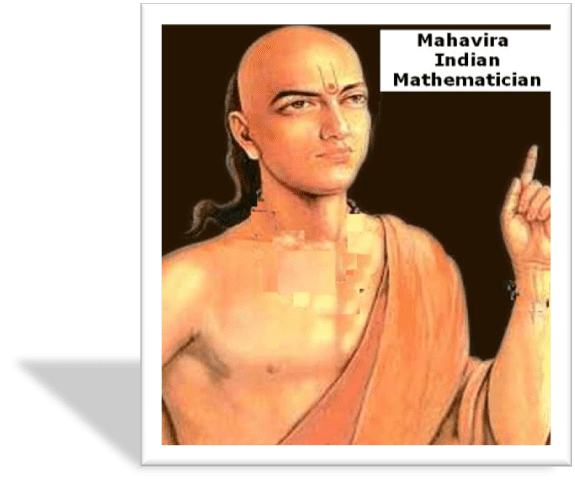Occupation Mathematician | ||
 | ||
Similar Sridhara, Brahmagupta, Bhāskara I | ||
Mah v ra mathematician
Mahāvīra (or Mahaviracharya, "Mahavira the Teacher") was a 9th-century Jain mathematician from Bihar, India. He was the author of Gaṇitasārasan̄graha (or Ganita Sara Samgraha, c. 850), which revised the Brāhmasphuṭasiddhānta. He was patronised by the Rashtrakuta king Amoghavarsha. He separated astrology from mathematics. It is the earliest Indian text entirely devoted to mathematics. He expounded on the same subjects on which Aryabhata and Brahmagupta contended, but he expressed them more clearly. His work is a highly syncopated approach to algebra and the emphasis in much of his text is on developing the techniques necessary to solve algebraic problems. He is highly respected among Indian mathematicians, because of his establishment of terminology for concepts such as equilateral, and isosceles triangle; rhombus; circle and semicircle. Mahāvīra's eminence spread in all South India and his books proved inspirational to other mathematicians in Southern India. It was translated into Telugu language by Pavuluri Mallana as Saar Sangraha Ganitam.
Contents
He discovered algebraic identities like a3=a(a+b)(a-b) +b2(a-b) + b3. He also found out the formula for nCr as [n(n-1)(n-2)...(n-r+1)]/r(r-1)(r-2)...2*1. He devised formula which approximated area and perimeters of ellipses and found methods to calculate the square of a number and cube roots of a number. He asserted that the square root of a negative number did not exist.
Rules for decomposing fractions
Mahāvīra's Gaṇita-sāra-saṅgraha gave systematic rules for expressing a fraction as the sum of unit fractions. This follows the use of unit fractions in Indian mathematics in the Vedic period, and the Śulba Sūtras' giving an approximation of √2 equivalent to
In the Gaṇita-sāra-saṅgraha (GSS), the second section of the chapter on arithmetic is named kalā-savarṇa-vyavahāra (lit. "the operation of the reduction of fractions"). In this, the bhāgajāti section (verses 55–98) gives rules for the following:
rūpāṃśakarāśīnāṃ rūpādyās triguṇitā harāḥ kramaśaḥ /
dvidvitryaṃśābhyastāv ādimacaramau phale rūpe //
When the result is one, the denominators of the quantities having one as numerators are [the numbers] beginning with one and multiplied by three, in order. The first and the last are multiplied by two and two-thirds [respectively].
Some further rules were given in the Gaṇita-kaumudi of Nārāyaṇa in the 14th century.
